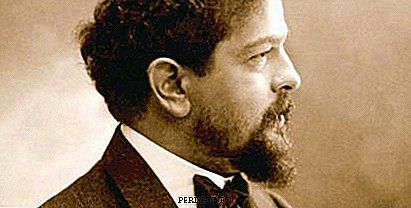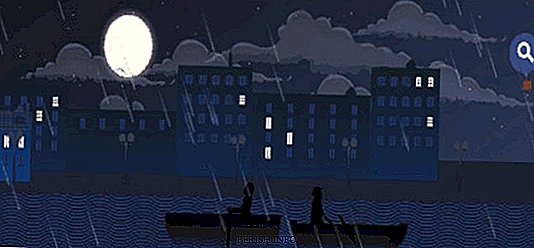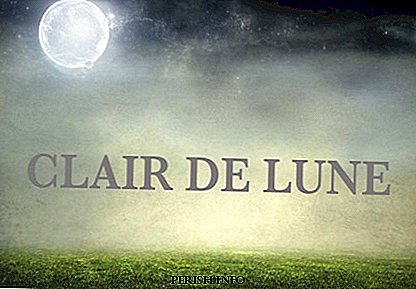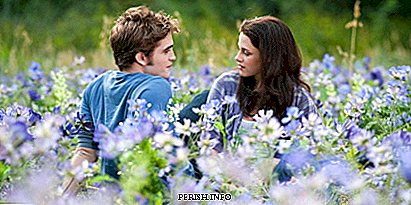Claude Debussy "Moonlight"

Composer Claude Debussy composed a huge number of wonderful works, but the symbol of his work is invariably the composition for piano "Moonlight". Sublime music as if consists not of notes, but of the quiet light of a night star. How many secrets are kept in the magic of the night, so much hidden in the composition. You can learn all the secrets, namely the history of creation, interesting facts, as well as the content, by reading our page.
History of creation
"Moonlight" is a composition from the series "Bergamas Suite". The writing marks the year 1890. 4 works were composed in just a few months.
The Bergamas suite brought Debussy success after the premiere in 1890. Society of critics warmly reacted to the innovation in music. Especially good reviews were written on "Moonlight". Contemporaries captured that fantastically harmonious world, saturated with magic and romance of the light of the moon.

Nevertheless, the cycle was subjected to several editions, and took its final form only by 1905. In the same year he entered the music stamp.
Interesting Facts
- One of the most original versions of the arrangement was created by Russian composer and arranger Dmitry Temkin. He transferred the composition to the organ. Music sounded in the movie "The Giant" (1956).
- "Moonlight" was not included in Walt Disney's "Fantasy" due to time constraints. Almost fifty years later, the fragment was restored and included in the extended version of the animated film.
- Music orchestrated by Andre Kaplet was used in the ballet "Blue Angel" in 1953.
- The composer, inspired by the 18th century French harpsichord music, composed several more pieces for this cycle. Nevertheless, "Moonlight" is very different in style. The writer thought for a long time whether to include the composition in this cycle, but doubts were defeated after the unconditional success of the composition at the premiere.
- August 22, 2013 in honor of the 151th anniversary of Debussy, the European server Google Doodle decided to organize a virtual journey along the embankment of the French capital. The atmosphere created by the movie fully reflected the era of the nineteenth century. The most romantic and bright work of the composer "Moonlight" was chosen as a musical work. The entourage of the video was complemented by balloons, city lights, windmills in Montmartre. In the end, two boats float along the Seine, it starts to rain, and the lovers hide under one red umbrella.

- After the end of the composition, Debussy had several versions of the name, among which were such as “Sentimental Walk” and “Nocturne”, but in the end the choice fell on the most romantic and inspired name “Moonlight”.
- It is believed that the creation of the nocturne, composer was inspired by the poem by the famous French poet Paul Verlaine "Moonlight". In fact, everything happened exactly the opposite. Inspired by light and harmonious music, the writer wrote 3 wonderful quatrains. In the first, Verlaine gracefully refers us to the original source: "The sad, wondrous entourage, the old Bergamus"
- During the composition of compositions in France was the fashion for the Comedy del Arte. Debussy could not help getting carried away by this little world of wandering artists. In honor of what the Bergamas suite was composed.
Content

"Moonlight" is considered one of the masterpieces of impressionism. Initially, impressionism appeared not in music, but in art. It is believed that the direction is based on a technique called "Impression". The artist seems to stop the moment, capturing it on the canvas. But music can express more than one moment. Instead of a single picture created by our imagination, even a small, but plot is drawn. The development of the storyline is possible only with the right choice of musical design.
Debussy skillfully handles the form of the work. Nocturne is a complex three-part form with an episode and code:
- The first part draws us a calm water surface, in which the face of the moon is serenely reflected. Silent rays slowly dissolve in the dark, nightly water.
- The episode, as it should be, has a free form. It consists of several complementary constructions, which are delimited by a change in tempo and tonality.
- Reprise varied complemented melodic accompaniment from the episode. The listener can observe how the night is filled with new colors.
- The code is built on the intonation of the episode, which makes the piece even more logical.
Arched isolation does not allow the product to fall apart. Returning to the original motifs bring the listener to the original memories. But the night world has already changed, development has been achieved. The moon path slowly dissolves, giving way to the sun and a new day.
The work shows the best features of musical impressionism:
- Subtle associative parallels. The work is not a software, even despite the presence of a talking title. Thus, it creates not direct analogies with the object of observation, but only hints at it. It is an image, a memory, not a reality.
- Visual acoustics. The main idea of impressionism is contemplation. Creating a barely perceptible image through the use of musical instruments is the main task of the composer, who composed in a similar direction. The sound is enriched with color. There is not a single minute to doubt the presence of the pictorial sounds in the nocturne.
- Unusual harmonization. The ability to properly harmonize the melody so as not to overload the composition is a matter of taste. Debussy did an excellent job. Almost every beat of the composition can be noted with bright and memorable deviations or modulations into distant tonalities.
- Ease of dynamics. Almost all the works created by Debussy are dynamic on pianissimo. Only in the climax zone can you notice a dynamic increase.
- Recreation of expressive techniques that characterize the art of the previous time. The episode refers us to a romantic era. This is indicated by an agitated accompaniment with the presence of a large number of passages.
- Landscape start. This is a beautiful night landscape, in which lies an extraordinary depth.
Many believe that classical music must obey the laws of drama. This implies finding a conflict within the structure. After all, almost all music was built in this way, from baroque to late romanticism. Debussy discovered a completely different way of worldview for a person - this is contemplation. Merging with nature helps to find the easiest way to find peace and inner harmony.
The use of music in the cinema
The purity of the music, the enthusiastic and dreamy character, attract directors in almost every corner of the world. Thousands of films decorate the wondrous melody of "Moonlight." We picked up the most famous series and films in which you can hear the work.

- Western world (2016)
- Tutankhamen (2016)
- Eternity (2016)
- Mozart in the jungle (2016)
- American scam (2013)
- Judgment Night (2013)
- Apprentice Master (2012)
- Destroyers (2011)
- Rise of the Planet of the Apes (2011)
- Dusk. Saga. Eclipse (2010)
- Courier (2010)
- Twilight (2008)
- Anger (2004)
- Ocean's Eleven (2001)
- Casino Royale (1967)
Nocturne "Moonlight" is one of the few writings that allow a person not to struggle with fate, but to enjoy every moment of life. After all, happiness lies in awareness, in the present. Whether it's a magical night or the morning dawn, you only live when you can feel this world. Contemplation is infinity.

Leave Your Comment